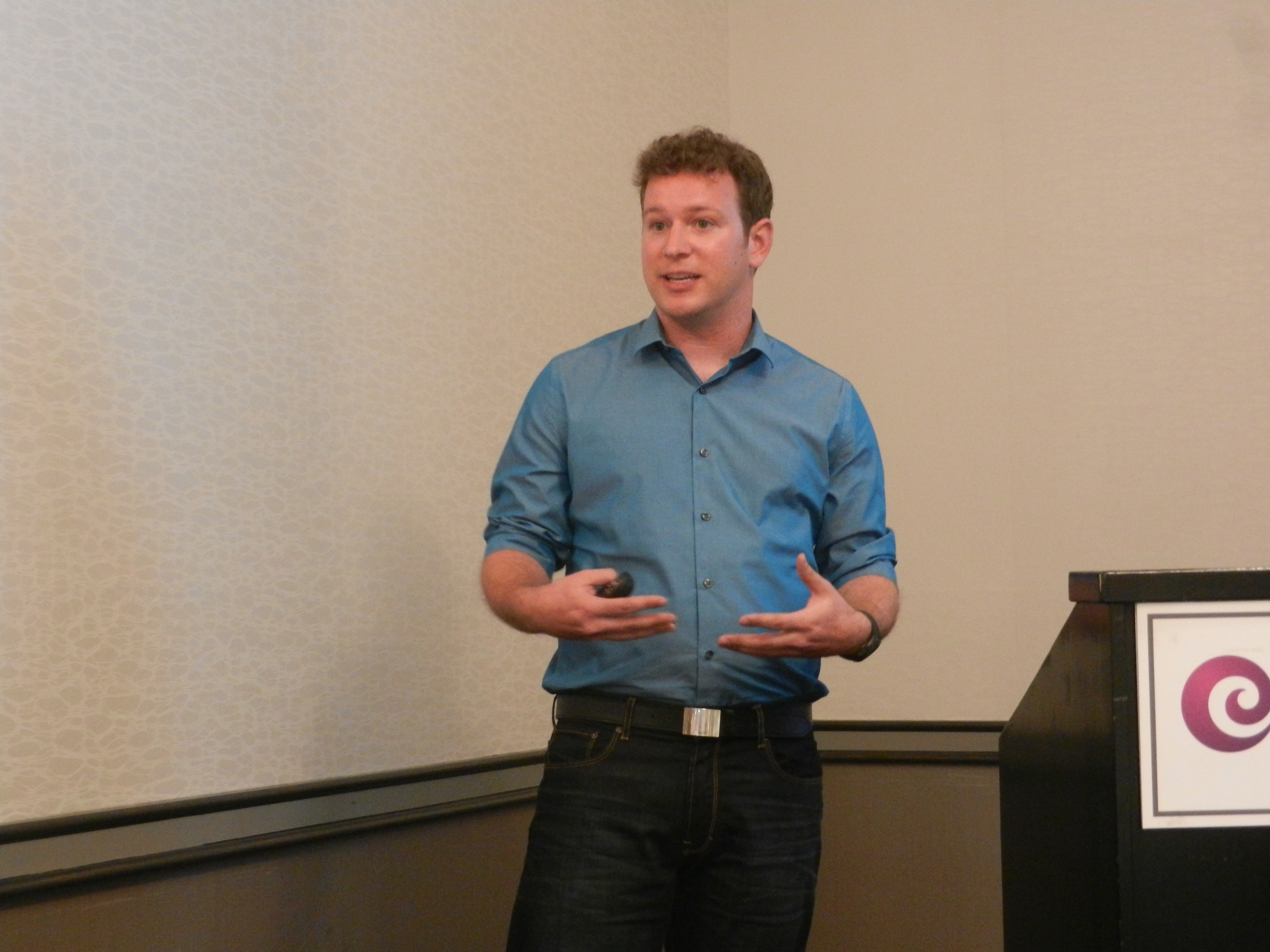The Seaweed and Integrated Multi-Trophic Aquaculture (IMTA) Research Laboratory of
Dr. Thierry Chopin
Jonathan Day
MSc (2011 - present)
Thesis Work:Investigating new techniques to quantify potential aquaculture nutrient effects on selected wild species – hydrozoan and bryozoan early colonizers and macroalgae Ulva lactuca (sea lettuce), Porphyra purpurea (nori) and Palmaria palmata (dulse) – in proximity to Integrated Multi-Trophic Aquaculture (IMTA) sites
Abstract: As part of the Canadian Integrated Multi-Trophic Aquaculture Network (CIMTAN) research to quantify energy and nutrient dispersal and scales of influence on wild species from open-water Integrated Multi-Trophic Aquaculture (IMTA) sites, new techniques are being investigated to measure a potential response to both particulate and dissolved nutrients. To better understand the influence of potential particulate nutrient source in the mid-water zone, the relationship between wild fouling species, distance, and the physical environment were tested using an array of biocolonization plates. Designed to attract early colonizing wild species, these plates were deployed at near-cage intervals of 1, 5, 7, 13, and 15 m and one far interval at 150 m from an active fish farm. The total biomass accumulation at 150 m (far) was slightly higher on average than the biomass accumulation within the first 15 m (near). Species composition showed that different species colonised the plates at different distances. The “far“ plates were dominated by hydrozoans, which accounted for the greater biomass accumulation at this distance, versus a dominance of bryozoans at the near locations. Environmental conditions (temperature, pH, salinity, chlorophyll a, oxygen and turbidity) measured throughout the deployment fluctuated with tidal flow and throughout the 10 week deployment period. However, there was no evidence to indicate that temperature, pH, salinity or turbidity were different with respect to distance that would account for the difference in species composition and resulting biomass. The fact that observed species composition can change within a relatively small distance (‹ 150 m) from a potential source of particulate nutrients has expanded our knowledge on how local early colonizing wild species interact with salmon aquaculture in a complex coastal zone. Unfortunately, hydrographic conditions that were measured during this study were not sufficient to explain this pattern in species composition and more information on nutrient availability and water flow is needed to develop this technique as a new tool to monitor particulate nutrient exposure.
The potential influence of dissolved nutrients on wild species was also investigated by measuring nutrient content in wild macroalgal species, the green alga Ulva lactuca and the red algae Porphyra purpurea and Palmaria palmata. A technique using colour characterization (expressed as chroma, hue and lightness) of seaweeds was tested as a faster and cheaper proxy for biochemical analyses of tissue total nitrogen content. Samples, collected throughout the spring and summer at two geographic locations, showed measurable changes in colour and nitrogen content throughout the seasons, as well as an increase in colour and nitrogen variability by species and by location as the sampling period progressed. Overall a significant linear relationship exists between nitrogen content and colour (chroma, hue and lightness) in all three species, when all available data are analyzed with a General Linear Model (GLM). The Ulva GLM explained 84.1 % (Adjusted Squared Multiple R) of the variability in nitrogen, the Porphyra GLM 68.8 % (ASMR) and the Palmaria GLM 17.4 % (ASMR). Location did not affect the significance of the relationship between nitrogen and colour but did change the nature of it with respect to the slopes and ASMR calculated by the GLM. Sample season did not affect the significance of the relationship in Ulva or Porphyra but did in Palmaria. Palmaria samples collected in the summer season did not have a significant relationship but those collected in the spring did.
The significant relationships in wild species (especially in Ulva) suggest that colour monitoring may be a good technique to measure potential nutrient effects in some species of macroalgae. This simple, quick and relatively cheap method could be used as a tool to monitor the effectiveness of IMTA operations in comparison to conventional aquaculture operations. Future work should focus on obtaining a greater variety of nitrogen contents for analysis and vetting this new tool in the field to determine its predictive capability across the Bay of Fundy and beyond. It should also focus on determining how exactly Ulva responds to varying degrees of nutrient exposure to determine if there is a relationship between what the species is exposed to and how that is reflected by its internal nitrogen content. This would further expand the usefulness of this new tool, as it would potentially allow future investigators to quickly and cheaply determine not only the internal nitrogen content of Ulva present in an area, but also the conditions it is likely to have been exposed to during that period to use this macroalga as an indicator-over-time of nutrient loading.

 Accessible Version
Accessible Version